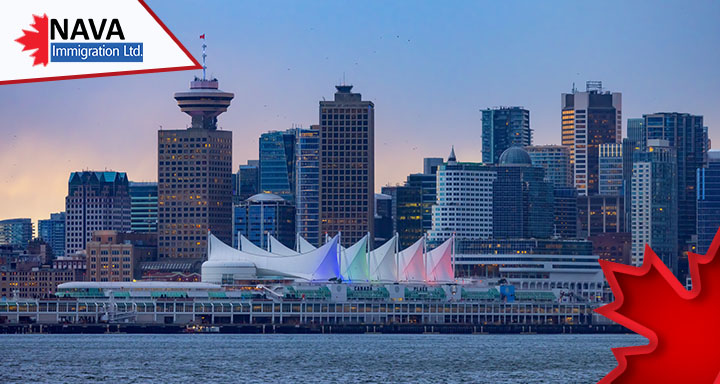IRCC Issued Details On New Temporary Humanitarian PR Pathway
Recently, IRCC issued details on a new temporary humanitarian PR pathway for Colombia, Haiti, and Venezuela citizens. IRCC announced this new temporary PR pathway on October 10 last year. IRCC noted that it would establish a new temporary humanitarian PR pathway for Colombian, Haitian, and Venezuelan citizens who, at the time of application, are living in Central America, South America, the Caribbean, or Mexico. The following are further details of the new temporary humanitarian PR pathway.
New Temporary Humanitarian PR Pathway Details
Candidates must have extended family connections in Canada in order to qualify for PR in Canada under this new pathway.
IRCC especially states that the primary applicant under this new temporary PR pathway has to be the child, grandchild, parent, grandparent, sibling, spouse, or common-law partner of a Canadian citizen or PR.
Note that this policy has a cap of 3,500 main applicants. This is because, under this pathway, Canada plans to support 11,000 eligible applicants as well as their families.
As per IRCC, this new temporary humanitarian PR pathway, which began on November 17, 2023, will stay open for a year or until the cap is met.
Applicants approved under this pathway will be entitled to pre- and post-arrival settlement services as well as resettlement assistance. For instance, they can get a transportation loan to help ease travel fees for individuals and families arriving in Canada.
From here, the applicant’s Canadian citizen or PR relative will be referred to as “anchor” as per IRCC.
Eligibility Details of New Temporary Humanitarian PR Pathway
For this new temporary PR pathway, there are two individual sets of eligibility requirements. One is for the main applicant desiring Canadian PR, and the other is for the anchor.
The Eligibility Requirements for Principal Applicant
The main applicants who are aiming for Canadian permanent residence must satisfy the following eligibility requirements:
- At the time of applying for PR, the applicant must be a Colombian, Haitian, or Venezuelan citizen living in the Caribbean, Mexico, Central America, or South America.
- They must have a relationship with a Canadian citizen or PR who satisfies the eligibility requirements of an anchor. They can be a spouse or common-law partner, a child, a grandchild, a parent, a grandparent, or a sibling. Notably, the anchor must not have gained PR under this pathway.
- They must have applied for PR online via electronic means provided on the site. Besides this, they are able to opt for an alternate application format provided on the site if they can not apply online.
- They must show the intention to settle in any of Canada’s provinces or territories other than Quebec.
- They must have a document listed in subsection 50(1) of the Regulations. If they are unable to provide a document listed under 50(1), they must offer a document listed in subsection 178(1) and 178(2) of the Regulations.
- They must have supplied a statutory declaration from their anchor to the IRCC that certifies the following:
- The anchor plans to offer the support outlined in Annex B of the public policy for the main applicant and their accompanying family members for a year outlined in section 1(3) of the Regulations.
- The anchor has not gained and understands that they can’t get any financial assistance from the overseas citizen or their family members.
Eligibility requirement for accompanying family members for new temporary PR pathway
IRCC has also issued an eligibility requirement for accompanying family members willing to attain Canadian PR.
The family members must satisfy the following eligibility requirements:
- They must be included in the PR application. All family members in and out of Canada must be listed regardless of whether they are accompanying. Applicants will subsequently have the chance to specify which family members will accompany them.
- As per IRCC, they must satisfy the legal definition of a family member.
- They must show the intention to settle in any province/territory in Canada other than Quebec.
- They must have a document listed in subsection 50(1) of the Regulations. If they are unable to provide a document listed under 50(1), they must offer a document listed in subsection 178(1) and 178(2) of the Regulations.
- They must not be inadmissible to move to Canada except for financial grounds.
What is the IRCC Accepted Proof of Canadian Status for Anchors?
Anchors are required to submit citizenship and permanent residency proof to verify their Canadian status. The following outlines the IRCC-accepted proof of Canadian status for anchors:
Canadian Citizenship: The citizenship proof can be a photocopy of a Canadian citizenship certificate or card (both sides) of Anchor, their Canadian birth certificate, or the bio-data page of their Canadian passport.
Canadian Permanent Residency: To prove PR status, Anchors can provide a photocopy of their permanent resident card or PR card, a Confirmation of Permanent Residence (COPR), or a landing record.
What if an applicant has submitted multiple permanent residence applications?
IRCC has released a statement concerning an applicant who has submitted multiple permanent residence applications. Suppose an applicant has an active application in the department’s Global Case Management System (GCMS) under the PR category, like family class. In this case, the department will continue to process the application received under the new public policy while the other application is being finalized.
How will IRCC Finalize the Decision on Such Applications?
After submitting a successful application under the new temporary PR pathway, an IRCC officer will review it. The officer verifies that all the criminal and medical background checks have been completed. They also verify the validity of the travel documents for the period of time required to be allowed into Canada.
IRCC will then generate a permanent residence visa and COPR for the main applicant and all accompanying family members.





